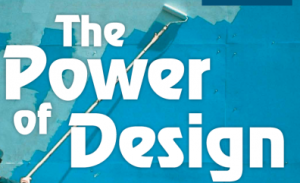It is a simple concept. People don’t read ads; they read what interests them. So if you are going to generate winning advertisement design goals, you are going to have to create some creative ideas and compelling copy.
And, oh, by the way, it must be more interesting than the millions of other advertisements out there. Now that is a daunting task, isn’t it?
Are you one that believes that advertisement design creativity can be learned? We are among that group. We also believe in suggestions for design thinking can boost team creativity through effective collaboration. Through a series of sparks and not a single flash of insight. Certainly our way of thinking.
Related post: Insurance Advertising War … 8 Examples to Learn From
Check out our thoughts on creative marketing.
It has been said that advertising is the price to be paid for being unremarkable. That may be true, but I have noticed, despite the growth in online marketing, that even remarkable businesses also advertise the old fashion way.
Here are key critical enablers we rely on to create compelling advertisements that can do both:
Advertising design goals … messages and content
Use simple words complemented with powerful visuals
Make your messages simple
So simple that the reader will quickly understand. Keep in mind that pictures are far more valuable than words.
Your Logo
If your business’s logo/name doesn’t contain what you do, make sure to clarify that in the ad. For example, saying “Ron’s European Inc. Collision Repair” instead of just “Ron’s Inc.”
Add information about what your business does and how you intend to help your potential customers.
Less is more
Don’t overwhelm people with information. Keep it as simple as possible while getting useful information across to the viewer.
You only have a few moments to communicate, so use powerful, focused and straightforward words – such as ‘free,’ ‘unbelievable,’ etc.
Use easy arguments
Easy cases are the conclusions people reach using inferences without a careful review of available information. Find and use original arguments that work because it is almost impossible to succeed when working against them.
Optimize the content
A call to action is crucial. Make it large and prominent to catch give the viewer’s an incentive.
Keep your message personalized – address it to one person, not to masses of people.
Ask a question to get the viewer thinking.
Give the readers a reason to act right away (for example – ‘today only’).
Use testimonials

Use lots of visual elements.
Advertisement design … visual elements
Visual elements should be part of the story
Support your messages with visual elements like a photo or graphics. This can be your logo, a picture of your business, or a graphic to support your messages.
Show and don’t tell
“Seeing is believing” and “actions speak louder than words” are two common sayings that reflect a bias and preference for visual presentation.
Use symbolic language and images that relate to the senses?
People prefer symbolic language and images that relate to their feelings. People are far less receptive and responsive to language and images that relate to concepts.
Life is experienced through the senses and using symbolic language and images that express what people feel, see, hear, smell or taste are easier for people to understand, even when used to describe abstract concepts.
Use compelling videos to convey your messages
The truth is that the processing capacity of our brains is limited and words may get in the way of emotionally powerful visual images. When powerful visual images dominate – when “a picture or video is worth a thousand words” – be quiet and let them do the talking.
Articles with images get 94% more views than those without. And posts with videos attract 3X more inbound links than plain text posts. A study by 3M showed that 90% of the information sent to the brain is visual, and visuals are processed 60,000 times faster than text.
And this holds up when you look at how the social world is evolving. The meteoric rise of sites like Vine, Instagram, and Pinterest, as well as the efforts by Facebook and Twitter to add more visual elements to their platforms, are only following the trend that visual content is the best way to reach short-attention-span audiences in a world filled with so many content choices.
McDonald’s is always coming up with innovative new ways of advertising, this brilliant print ad being its latest offering. The eye-catching visual design features a box of fries, carved from the very ingredient from which they’re made. Simple but conveying a powerful yet memorable message.
Jeff Bullas … emotional influence
Create emotional impact wherever you can
Bullas says to tell a simple story that evokes emotion
A good story has a beginning where a sympathetic character encounters a complicated situation, a middle where the character confronts and attempts to resolve the situation and an end where the outcome is revealed.
A good story does not interpret or explain the action in the story for the audience. Instead, a good story allows each member of the public to understand the story as he or she understands the work.
This is why people find good stories so appealing and why they find advertising that merely conveys information boring.
Convey basic emotional appeal
Experiences that trigger our emotions are saved and consolidated in lasting memory because the emotions generated by the experiences signal our brains that the skills are important to remember.
There are eight basic, universal emotions – joy, surprise, anticipation, acceptance, fear, anger, sadness, and disgust. Successful appeals to these basic emotions consolidate stories and the desired calls to action in the lasting memories of audiences.
Effective advertising techniques … design and layout
The biggest design and layout mistake? Too much information.
Information hierarchy
Choose information that’s most important and make it your primary element of the ad. Every piece of information in your ad should be weighted according to its importance. Make sure it is prioritized from most critical to least.
Use space wisely
Don’t use every inch of white space because you can. Leave some “breathing room” so people can digest your message. We believe the more, the better.
Use contrasting colors for fonts and backgrounds to make sure that your copy is readable. The best combo is a dark type on a light background, so it’s easier to read.
Fonts, fonts, and fonts
Use mostly sans-serif fonts and use different font sizes to differentiate the importance of the copy. Avoid using too many font types or too many font colors (think one or two max). A little color and a lot of white space go a long way.
The layout makes a difference
Be sure that your ads flow from left to right (as the eye travels left to right)
Pay attention to color schemes … avoid designs that are too busy
The size of the headline font should be big, and powerful enough to grab the attention of the reader.
This hard-hitting print ad aims to raise awareness of child labor… a simple but effective offering. Two things that could use some improvement, however: The ad is in black and white (when all the other ads on the page were color, and most of the fonts are the same size and too small. By adding color and font size increase and variation, they could have spiced things up!
Advertising and design … effective value proposition
Sometimes the value proposition is the packaging, not the product.
Define a value proposition that discriminates you from your competition. It is essential that you give your customers reasons to select you. It is amazing to us that many campaigns neglect this.
Match what viewers see with what they hear
People expect and prefer coordinated audio and visual messages because those messages are easier to process and understand. Audio and visual messages that are out-of-sync may gain attention, but customers find them uncomfortable.
Identifiable music
Music can be a rapidly identified cue for the recall of emotional responses remembered from previous advertising. Making the same music a recognizable aspect of all advertising signals the audience to pay attention to more relevant content.
A great TV ad by Dell that celebrates new business startup successes. Check out this memorable music that does a fantastic job of complementing the ad’s messages … ‘this magic moment.’
http://www.youtube.com/watch?v=Ja61fxmY77Q
Advertisement design … have a call to action
A simple call to action is needed on all ads.
Say exactly why people should contact your business and what you can do for them. For example “Come home to a life that is SIMPLY MAGNIFICENT.”
Make the desired call to action a part of the story
A good story that is very entertaining but does not make a direct connection between the call you want to act and the story is just a very fun story. The whole point of the story in advertising is to efficiently deliver the desired call to action.
If the audience does not clearly understand the call you want to action after seeing the ad, then you are missing the real opportunity. Remember this: having an entertaining story and clearly delivering the desired call to action are not mutually exclusive.
Related post: Successful Advertisement Design … 12 Best Examples to Study
Part of an integrated marketing campaign
Make your ad a component of an integrated marketing campaign.
It’s key to have social integration across all areas of the business. Social media is a tool to be used across all functions: HR, sales, marketing, product design, online, and customer support.
Look for how all areas of social (listening, research, support, content, and analytics) come together to have an impact on customer experience and employee collaboration.
Embed social media in the fabric of the company and empower your staff to use it to achieve better results for clients and the business. This is the best way to create an integration in your marketing.
So if you remember one thing from this article, remember this:
Marketing or advertising, you need to create information that your customers find interesting and worth talking about and remembering.
The bottom line
Make your thinking vivid by including what comes naturally to you. For example, you may not be able to imagine sequences of images very well, but you may excel in imagining other modalities such as smell, touch, and sound.
You may be excellent in infusing your visualization with emotional charge and great feelings. DO not feel compelled to stay within any single modality but make your visualizations and imagination vivid and rich by including numerous modalities.
Your senses are wonderful tools for you to engage while unleashing the power of the imaginative mind. Make your imagination your ally and your best friend.

